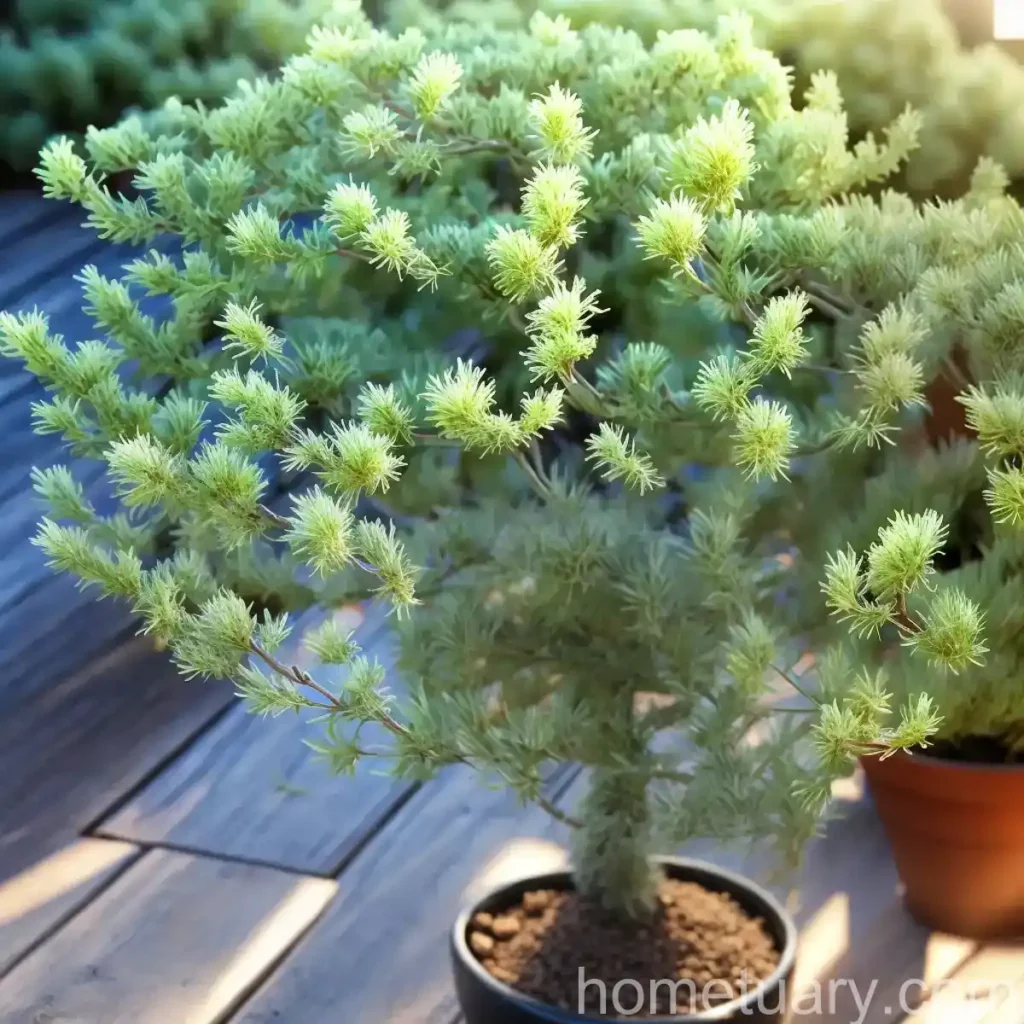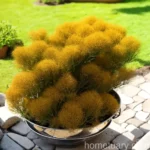What is False Willow (Baccharis angustifolia)?
False willow, scientifically known as Baccharis angustifolia, is a versatile and resilient plant that holds several cultural, ecological, and medicinal significance. Often referred to as false willow due to its willow-like appearance, it is a flowering shrub belonging to the Asteraceae family. This plant species is native to the southeastern United States, particularly in states like Florida, Louisiana, and Texas. False willow is characterized by its narrow leaves, small white flowers, and its hardy, adaptable nature, making it a popular choice for various landscaping and restoration projects.
False willow serves as an excellent plant for stabilizing soil, providing wildlife habitat, and enhancing the aesthetic appeal of gardens and natural landscapes. Additionally, it has been traditionally used for its medicinal properties, contributing to its cultural and historical significance. Understanding the key aspects of false willow, including its cultivation, uses, and maintenance, is vital for harnessing its full potential and ensuring its successful growth and development.
Key Takeaways – False Willow (Baccharis angustifolia)
Before delving into the specifics of false willow, it is essential to highlight the key takeaways associated with this plant:
- Botanical Name: Baccharis angustifolia
- Common Name: False Willow
- Family: Asteraceae
- Native Range: Southeastern United States
- Characteristic Features: Narrow leaves, small white flowers
- Significance: Soil stabilization, wildlife habitat, medicinal uses
- Adaptability: Hardy, drought-tolerant, suitable for various soil types
By focusing on these key takeaways, we can gain a comprehensive understanding of false willow and its relevance within different contexts, ranging from ecological restoration to horticultural practices.
Culture
Uses
False willow serves a multitude of purposes, making it a valuable addition to various environments. Its uses are diverse and extend to both practical and aesthetic domains:
- Soil Stabilization: Due to its deep and extensive root system, false willow effectively prevents erosion and stabilizes soil in diverse habitats, including wetlands, riverbanks, and disturbed landscapes.
- Wildlife Habitat: The plant’s dense growth habit and nectar-rich flowers attract a wide range of pollinators, including bees and butterflies, thereby enhancing local biodiversity.
- Landscape Ornament: False willow’s slender, willow-like appearance and white blooms contribute to its aesthetic appeal, making it a popular choice for landscaping and ornamental purposes.
- Medicinal Properties: In traditional medicine, false willow has been utilized for its potential therapeutic benefits, including its anti-inflammatory and antiseptic properties.
These varied uses underscore the plant’s significance in environmental conservation, horticulture, and cultural practices.
Water
False willow exhibits remarkable adaptability to different water conditions, contributing to its resilience in various habitats. It can thrive in both wet and well-drained soils, making it suitable for locations with fluctuating moisture levels. While it can tolerate periodic flooding, it also adapts well to drier environments, showcasing its versatility across different water regimes.
Sunlight
As for its sunlight requirements, false willow thrives in full sun to partial shade. It grows best when exposed to ample sunlight, but it can also tolerate partial shade, making it suitable for a range of light conditions. This flexibility enables its successful cultivation in diverse settings, providing opportunities for its integration into various landscape designs.
Fertilizer
False willow is relatively low-maintenance and typically does not require regular fertilization. However, in instances where the plant is grown in nutrient-poor soils or is exhibiting signs of nutrient deficiency, a balanced, slow-release fertilizer can be applied during the growing season to support its overall health and vigor.
Soil
The adaptability of false willow extends to its soil preferences, as it can thrive in a wide range of soil types, including sandy, loamy, and clay soils. It is tolerant of both acidic and alkaline soil conditions, further underscoring its suitability for different environmental contexts. Prioritizing well-draining soils is beneficial for the plant’s growth, particularly in areas prone to excess moisture.
Pruning
Pruning false willow is generally minimal and focused on maintaining its shape and controlling its size. This can be done by selectively trimming the branches to encourage a compact, tidy growth habit. Additionally, the removal of any damaged or diseased branches is essential to support the plant’s overall health and appearance.
Propagation
Propagation of false willow can be achieved through various methods, including seed propagation and stem cuttings. Seeds can be collected from mature plants and sown in well-prepared seedbeds, while stem cuttings can be taken from healthy, established plants and rooted in a suitable growing medium. Both approaches require attention to environmental conditions and regular monitoring to ensure successful establishment.
Container Popularity
False willow’s adaptability and aesthetic appeal make it a popular choice for container gardening. Its ability to thrive in confined spaces and its ornamental features, including its narrow leaves and delicate flowers, contribute to its appeal as a container plant. When grown in containers, it is crucial to provide adequate drainage and monitor moisture levels to support the plant’s growth and health.
Common Diseases
False willow is generally resistant to many common plant diseases and pests. However, it is not immune to occasional issues that may affect its overall well-being. The following are some common diseases and ailments that may impact false willow:
- Powdery Mildew: In humid or poorly ventilated conditions, false willow may be susceptible to powdery mildew, characterized by a white, powdery growth on the leaves.
- Root Rot: Excessive moisture or poorly draining soils can lead to root rot, potentially causing damage to the plant’s root system and impacting its overall health.
These issues can be managed through proactive measures, including maintaining appropriate growing conditions, providing adequate air circulation, and addressing any signs of stress promptly.
Disease Diagnosis
Diagnosing diseases in false willow involves careful observation of the plant’s overall condition and specific symptoms. Visual cues such as discolored or distorted leaves, unusual growth patterns, or the presence of fungal growth can indicate potential diseases or stress factors. By closely monitoring the plant and seeking professional guidance when necessary, accurate diagnosis and effective management strategies can be implemented.
Common Pests
While false willow exhibits resistance to many pests, it may still be susceptible to certain insect nuisances. Common pests that may affect false willow include:
- Aphids: These small, sap-feeding insects can cluster on the undersides of leaves, leading to the distortion of new growth and the potential for the development of sooty mold.
- Scale Insects: Scale insects can infest false willow, causing damage to the plant by draining its sap and weakening its overall vigor.
Implementing integrated pest management practices, including regular monitoring, promoting natural predators, and employing targeted control measures, can help address pest issues while maintaining the plant’s ecological balance.
Botanist’s Tips
To maximize the success of cultivating and caring for false willow, consider the following botanist’s tips:
- Site Selection: Choose a location that provides adequate sunlight and well-draining soil to support the plant’s growth and resilience.
- Adequate Moisture: While false willow is adaptable to different moisture levels, it is crucial to avoid prolonged waterlogged conditions and ensure appropriate moisture management.
- Regular Monitoring: Keep a close eye on the plant’s health, including leaf color, growth patterns, and signs of any potential stressors or issues.
- Pruning Practices: Engage in selective pruning to maintain the plant’s shape and promote air circulation to minimize the risk of disease.
- Integrated Pest Management: Proactively manage potential pest issues through holistic and targeted approaches, considering the plant’s ecological context.
By incorporating these expert tips into the care and maintenance of false willow, individuals can facilitate its thriving growth and contribute to its long-term health and vitality.
Fun Facts
- The white, feathery appearance of false willow’s flowers gives it a distinctive and appealing charm, making it a visually captivating addition to landscapes and natural settings.
- False willow’s capacity to attract diverse pollinators, including bees and butterflies, underscores its ecological value in supporting local wildlife and biodiversity.
- The plant’s adaptability to different soil and moisture conditions reflects its resilience and versatility in diverse environmental contexts.
These fun facts not only enrich our appreciation for false willow but also highlight its ecological and aesthetic contributions to the natural world.
Links to External Resources
- Baccharis angustifolia: A Versatile Native Plant for Erosion Control and Wildlife
- Baccharis angustifolia (Progress report)
- Baccharis angustifolia – North American Invasive Species Network
- False Willow – Baccharis angustifolia
In conclusion, false willow (Baccharis angustifolia) stands out as an exceptional plant species with its diverse uses, resilient nature, and ecological significance. By understanding its cultural, environmental, and practical aspects, individuals can harness the potential of false willow for landscaping, conservation, and medicinal endeavors. Its adaptability, aesthetic appeal, and role in supporting biodiversity underscore its value as a versatile and vital component of natural and cultivated landscapes.
By appreciating the distinct characteristics and benefits of false willow, we can further promote its integration into various ecological restoration projects, horticultural practices, and conservation initiatives, contributing to the broader goal of sustainability and environmental stewardship.















